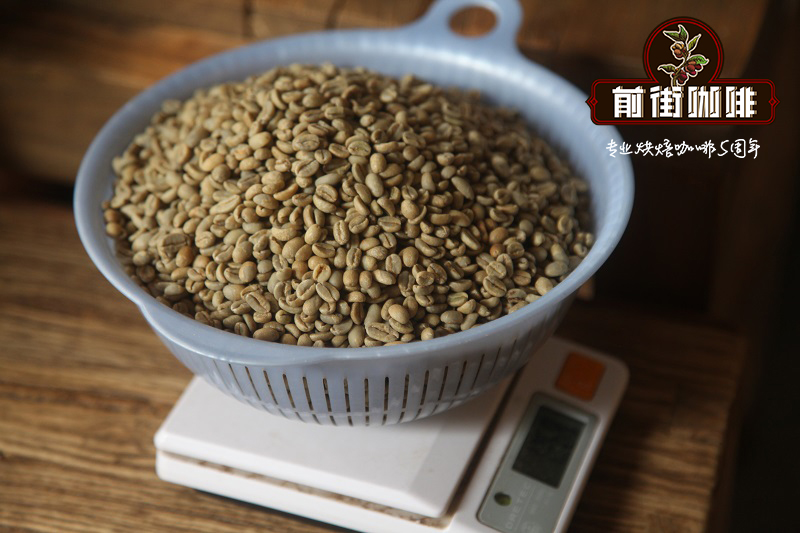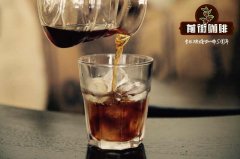[Sumatran Fine Coffee] West Java Coffee beans in Indonesia-Honey-treated Coffee from Frinza Manor

Professional coffee knowledge exchange more coffee bean information please follow the coffee workshop (Wechat official account cafe_style)
[Sumatran boutique coffee] what are the flavor characteristics of Indonesian West Java coffee beans-honey-treated coffee beans from Frinza Manor?
Wildan Mustof is the owner of the manor. In 2010, he and his wife Atieq first started their coffee growing project in the Sindangkerta Weninggalih area. Since then, the farm at Flint Manor in Java has become their main growing area. Since the first year of production, Wildan has focused on quality and strict management and handling. While most Indonesian coffee producers are doing coffee wet planing, Wildan focuses on full-washing treatment. This coffee is a variety cultivated by Sigarar Utang, which is located at 1300m above sea level, 1400m above sea level in West Java (locally known as "Sunda"), as well as a well-ventilated storage space and drying plant, which means that they have complete control over the quality of the products from harvesting, grading, screening to shipping. Most of their coffee is washed in full water, but it is also treated with wet planing and sun treatment, mainly for the local market. They classify coffee batches according to where they are planted, the variety they plant, and the date of harvest. Through cooperation with the Coffee Research Center, they have planted a lot of unknown varieties on the farm, which are different from other species, because the coffee trees are still too small and no one knows how the taste spectrum of these coffee trees will be presented. In addition to their own coffee production, they also handle coffee for local coffee farmers.
The elegant S795 is called Jember in Indonesia. Jember Coffee Research Center, a coffee research center in East Java, introduced local varieties from India and planted them in Javanese farmers, who call this S795 Jembe. S795 has blue and green bean color and can produce 2000 kg of high yield per hectare. The Indonesian Ministry of Agriculture is vigorously promoting this excellent variety and improving other local varieties. Toraja Toraja, one of the varieties of Sulawesi, also contains the consanguinity of S795. What about the textual research of the native tree species of S795-natural variety natural variation and mixed species hybrid? According to the verification of the data, it turns out that S288 is an excellent hybrid variety cultivated in India in 1946, a variety of S288 (second generation) and Kent from India, giving birth to S795 with strong disease resistance, prolific, large and delicious bean grains, 70% and 17 mesh. The predecessor of S288 is from the pedigree S288 (first generation) and Typica hybrid named S26, because the first generation of S288 does not look good, and has the smell of Liberian Liberica. Indian botanists in turn used the first generation of S288 and Typica hybrid Kent, and then mixed with the second generation of S288 to become the current S795. Its resistance to leaf embroidery disease is strong, the flavor is close to Arabica, and it is more wild. To sum up, S795 is of Liberian blood, but after careful cultivation by Indian botanists, it has successfully washed away the smell of Liberia, making it more elegant and disease-resistant, and many alternative coffees of mixed breeds are also one of the sources of game.
The harvest season is from May to September, and the main harvest is from June to August. After the coffee is harvested, the coffee cherries that are not ripe and affected by diseases and insect pests are screened and removed by hand.
After peeling, the harvested berries will first undergo dry fermentation for 18 hours, then add water and continue to ferment for 10 Murray for 12 hours, and then rinse with clean water after complete fermentation.
At present, most coffees are dried on the scaffolding in the greenhouse for 2 days, and then moved to the terrace to dry. The drying time is about 14m / m / m for 20 days, depending on whether it rains during the drying period.
Qianjie recommended cooking:
Filter cup: Hario V60
Water temperature: 90 degrees
Degree of grinding: small Fuji 3.5
Cooking methods: the ratio of water to powder is 1:15, 15g powder, the first injection of 25g water, 25 s steaming, the second injection to 120g water cut off, waiting for the powder bed water to half and then water injection, slow water injection until 225g water, extraction time about 2:00
Analysis: using three-stage brewing to clarify the flavor of the front, middle and back of the coffee. Because the V60 has many ribs and the drainage speed is fast, it can prolong the extraction time when the water is cut off.
Important Notice :
前街咖啡 FrontStreet Coffee has moved to new addredd:
FrontStreet Coffee Address: 315,Donghua East Road,GuangZhou
Tel:020 38364473
- Prev

What are the brands of coffee in Sumatra, Indonesia? What is the taste of Java coffee beans tested in the cup?
Professional coffee knowledge exchange more coffee bean information please follow the coffee workshop (Wechat official account cafe_style) what coffee brands are there in Sumatra, Indonesia? What is the taste of Java coffee beans tested in the cup? How to brew just tastes good? Among the coffee-producing countries, Indonesia is a very noteworthy one. Indonesia is an island country in the Indian Ocean, and the islands are distributed at the equator.
- Next

What is the taste of Indonesian Arumanis honey treated West Java S795 variety? The flavor of Java coffee
Professional coffee knowledge exchange more coffee bean information please follow the coffee workshop (Wechat official account cafe_style) Indonesia Arumanis honey treatment West Java S795 what is the taste? What are the flavor characteristics of Java coffee? Java Arabica coffee, unlike most other Indonesian coffee, grows on small farms for initial processing. Java coffee grows on large farms or plantations.
Related
- Detailed explanation of Jadeite planting Land in Panamanian Jadeite Manor introduction to the grading system of Jadeite competitive bidding, Red bid, Green bid and Rose Summer
- Story of Coffee planting in Brenka region of Costa Rica Stonehenge Manor anaerobic heavy honey treatment of flavor mouth
- What's on the barrel of Blue Mountain Coffee beans?
- Can American coffee also pull flowers? How to use hot American style to pull out a good-looking pattern?
- Can you make a cold extract with coffee beans? What is the right proportion for cold-extracted coffee formula?
- Indonesian PWN Gold Mandrine Coffee Origin Features Flavor How to Chong? Mandolin coffee is American.
- A brief introduction to the flavor characteristics of Brazilian yellow bourbon coffee beans
- What is the effect of different water quality on the flavor of cold-extracted coffee? What kind of water is best for brewing coffee?
- Why do you think of Rose Summer whenever you mention Panamanian coffee?
- Introduction to the characteristics of authentic blue mountain coffee bean producing areas? What is the CIB Coffee Authority in Jamaica?

